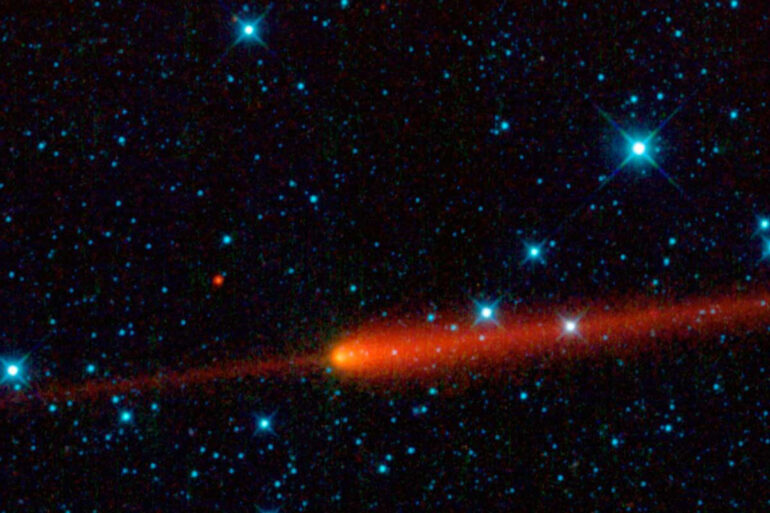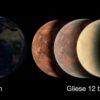A new study from the University of Central Florida has found strong support that the outgassing of molecules from comets could be the result of the composition from the beginning of our solar system.
The results were published today in The Planetary Science Journal.
The study was led by Olga Harrington Pinto, a doctoral candidate in UCF’s Department of Physics, part of the College of Sciences.
Measuring the ratio of certain molecules present after outgassing from comets can provide insights to the chemical composition of early solar systems and physical processing of comets after they formed, Harrington Pinto says. Outgassing is when comets, which are small bodies of dust, rock, and ice in the solar system, warm and start to release gases.
As part of her dissertation research, Harrington Pinto compiled the amounts of water, carbon dioxide, and carbon monoxide gases from 25 comets to test predictions of solar system formation and evolution.
This enabled almost twice as much comet carbon monoxide/carbon dioxide data to be studied. The measurements came from a variety of scientific publications. She carefully combined data obtained with different telescopes and different research teams when the measurements were simultaneous, and she could confirm that the data were all well-calibrated.
“One of the most interesting results is that comets very far from sun with orbits in the Oort cloud that have never, or only rarely, orbited near the sun, were seen to produce more CO2 than CO in their coma, whereas comets that have made many more trips close to the Sun behave the opposite,” Harrington Pinto says. “This had never been seen conclusively before.”
“Interestingly, the data are consistent with predictions that comets that have been hanging out very far from the sun in the Oort cloud may have been bombarded by cosmic rays on their surface so much that it created a CO-depleted outer layer,” Harrington Pinto says. “Then after their first or second trip close to the sun, this processed outer layer is blasted off by the sun revealing a much more pristine comet composition which releases much more CO.”
The researcher says the next step for the work is to analyze the first centaur observations that her team made with the James Webb Space Telescope to directly measure the carbon monoxide and carbon dioxide and compare the results with this study.
Harrington Pinto received her Master of Science in physics from the University of South Florida. She worked on this study with Maria Womack, a courtesy professor at UCF; Yanga R. Fernandez, a professor at UCF; and James Bauer, a professor at University of Maryland.
More information:
New Study of Comets Provides Insight into Chemical Composition of Early Solar System, The Planetary Science Journal (2022). DOI: 10.3847/PSJ/ac960d
Provided by
University of Central Florida
Citation:
New study of comets provides insight into chemical composition of early solar system (2022, November 4)



